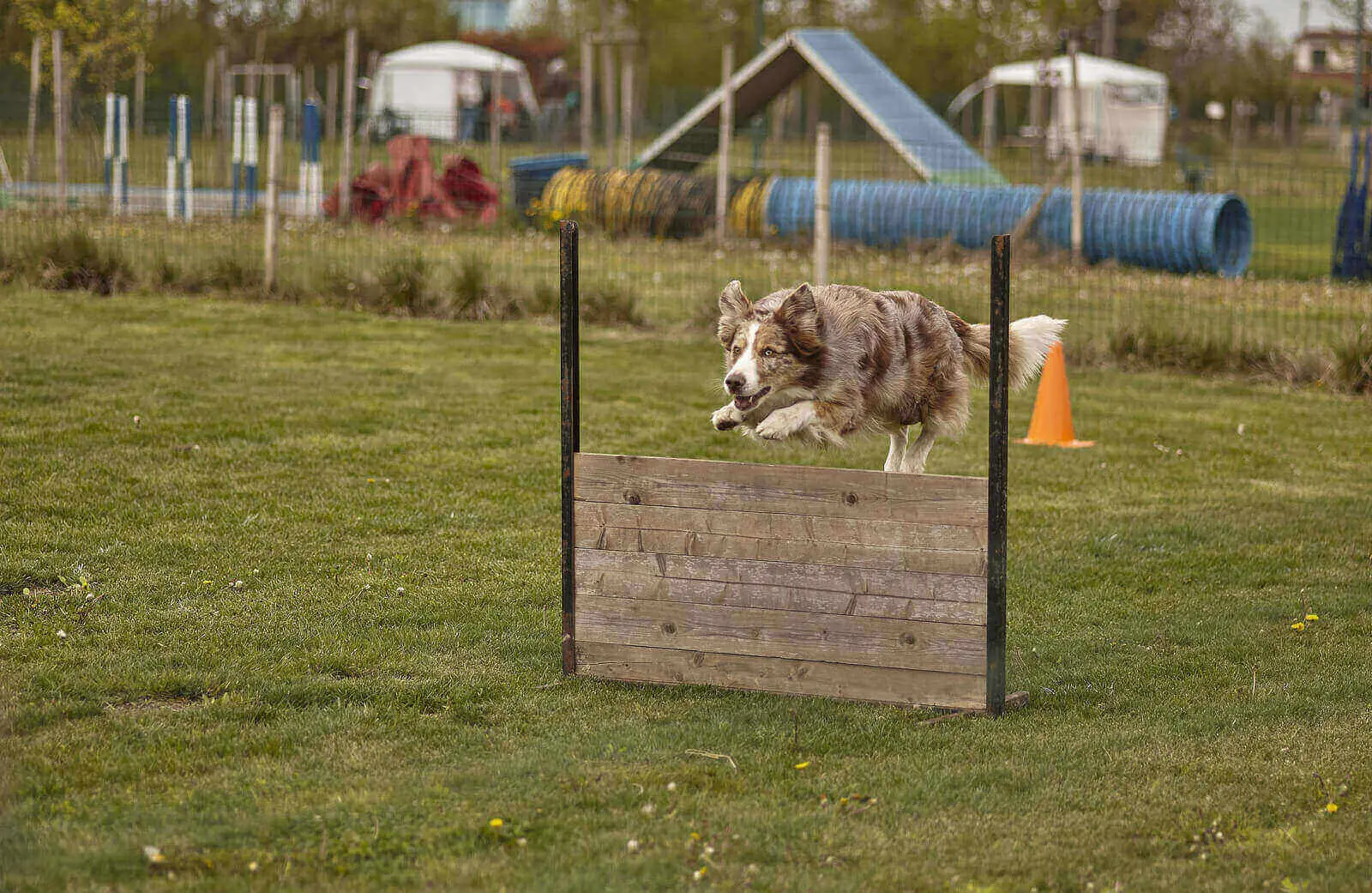The decision on whether to euthanize a dog that is suffering from degenerative myelopathy is a difficult one. After making the decision to put the dog down, you then need to make a decision on ‘when’. And this decision can be equally difficult. Read on, to get information on the factors that should inform the decision on when to put a dog down with degenerative myelopathy.
So, canine degenerative myelopathy when to euthanize and when to put down a dog with degenerative myelopathy? Most experts seem to be of the view that you should do it within 6 months. But this is the sort of thing for which you need your vet’s advice, before making a final decision one way or the other.

What is Degenerative Myelopathy in Dogs?
In the simplest terms, Degenerative Myelopathy (DM) in dogs is a condition that affects the nerves and spinal cord. It makes the dog’s hind limbs become weak, over time. This often leads to paralysis. It is a condition that can also disrupt the dog’s ability to control urine and feces.
Ultimately, it can lower the dog’s quality of life greatly. It can bring the dog a great deal of unhappiness. And it often eventually kills the dog.
You should also look out for Dog Lymphoma and know when is the right time to euthanize them. Canine Degenerative Myelopathy when to euthanize is another decision you need to take in consultation with your Vet.
Should I Put My Dog Down Degenerative Myelopathy?
Before attempting to tackle the main question (on canine degenerative myelopathy when to euthanize), we first need to find out whether it is the right thing. So we first need to figure out whether or not you should put your dog down on account of this condition.
As we have already stated, this is the sort of illness that can compromise the dog’s quality of life significantly. It is the sort of condition that can make the dog very unhappy.
When it becomes clear that the condition is causing your dog unbearable unhappiness, it would be time to consider euthanasia. In other words, when it becomes clear that the condition is lowering your dog’s quality of life too much, you can consider putting him down.
So, yes, there are situations where you should put your dog down on account of the condition. This would also be to spare him the otherwise slow, undignified natural death by the illness.
Of course, it is not automatic that every dog with the condition needs to be put down. The decision on whether and when to put a dog down with degenerative myelopathy needs to be done on case by case basis.
It depends on how much anguish the dog seems to be in. When it gets to an extreme level – where the frustration and anguish seems to be too much for the dog – that is when the option of putting him down should arise.
Canine Degenerative Myelopathy When to Euthanize
Figuring out exactly when to put a dog down with degenerative myelopathy is not easy. Ultimately, you should be guided by the dog’s quality of life. If, because of the condition, the dog’s life has become ‘not worth living’, that would be the point at which to put him down. Alternatively, you can euthanize if it is clear that the dog is in the late or final stages of the condition, which come with very tough complications.
Further, in making the decision on when to put a dog down with wobblers, you have to consider canine degenerative myelopathy stages. In most cases, ‘putting down’ becomes an option on account of degenerative myelopathy late stage symptoms.
In the earlier stages, pug myelopathy may not be bringing your dog too much frustration or affecting his quality of life too much. At those earlier stages, it would probably make no sense to put the dog down. Instead, you should focus on according him good quality life for as long as possible.
All said and done, you will need expert advice before making the final decision on when to put a dog down with degenerative myelopathy.
How Do I Know if My Dog Has Degenerative Myelopathy?
Before going any further with the canine degenerative myelopathy when to euthanize discussion, we first need understand the condition properly.
More specifically, we need to answer the question on how you can tell if your dog has this condition. And as it turns out, there is a reasonably simple way to know if your dog has DM. That is by looking out for the condition’s symptoms.
There are several signs through which this condition manifests. If your dog has those symptoms, then you may suspect that he has the condition. Only the vet can make the definitive diagnosis though. And that is after looking at not only the signs, but also carrying out other tests – including blood tests, x-rays, MRIs and CT scans.
Symptoms of Degenerative Myelopathy in Dogs
A dog with that condition will usually show significant lack of coordination. This is typically on account of weakness in the dog’s hind limbs. As it goes on, it may get to a point where the dog is unable to rise up from lying position.
Another common symptom is that of the dog having a swaying movement while walking. Sometimes it gets very bad: the dog even starts to sway while standing still! Sometimes, these swaying movements may actually be mistaken for degenerative myelopathy seizures.
DM in dogs also tends to cause incontinence – of both urine and bowel movements. Sometimes, in the latter stages, degenerative myelopathy and vomiting and degenerative myelopathy diarrhea issues may be seen. These may be due to the organ failures seen in the late and final stages of the condition.
A dog with this illness has a tendency to drag its hind limbs while walking. This could in turn lead to wearing down of hind toes and could worsen to a stage where the dog’s legs buckle. It is the typical old dog back legs collapsing scenario. It could, in worse cases, actually lead to dog back legs slipping out with eventual paralysis.
The difficult movement is what causes the common association between degenerative myelopathy and panting.
It is, however, worth stating that there are several other conditions that can cause dog weak back legs panting symptoms. So it is not every time you see a panting dog with weak back legs that you have to suspect DM.
Because of the mental anguish the dog suffers on account of these symptoms, he may begin to whine. This is how the characteristic degenerative myelopathy whining comes into being. It could also lead to degenerative myelopathy loss of appetite, as the dog starts to lose zeal for living.
Degenerative Myelopathy Diagnosis
Before making the canine degenerative myelopathy when to euthanize decision, you need proper diagnosis. This can only be done by a vet. In making it, the vet will look at the dog’s symptoms. He will also probably order for X-rays, CT scans and MRIs. And he may go as far as also asking for lab tests.
Once you have a definitive diagnosis, you can proceed to make the canine degenerative myelopathy when to euthanize decision.

Degenerative Myelopathy or Arthritis?
Some of the DM symptoms mimic those of arthritis. So how do you tell that your dog is suffering from one and not the other? The answer is in looking out for symptoms that are definitive of DM, and which don’t come with arthritis.
For instance, there is bowel and urine incontinence with DM. That is not common with arthritis. The level of pain in arthritis is higher than that in DM. Further, the level of muscle mass loss in DM is typically more than in arthritis. Ultimately, only a vet can make the final diagnosis: typically after carrying out a proper degenerative myelopathy test.
It is important to see that a dog could be suffering from both DM and arthritis at the same time. They are not mutually exclusive.
What are the Final Stages of Degenerative Myelopathy in Dogs?
If you pose the question on canine degenerative myelopathy when to euthanize to most experts, they will tell you should do it when the dog gets to the later/final stages of the condition. But how do you identify the final stages of this condition in dogs?
In the final stage, the dog shifts from having difficulties supporting itself/moving, to being completely unable to support itself or move. Complete paralysis is also a common manifestation of final stage DM in dogs. The dog may also experience complications in its respiratory system. This is often followed by organ failures.
Therefore if your dog is completely unable to stand on its own, it is probably at/near the final stage of the condition. If the dog is having paralysis, it is definitely in the late stage of DM. And if, on account of DM, you see respiratory complications and organ failures, then that is certainly the late/final stage.
How Fast is Degenerative Myelopathy Progression in Dogs?
To get further insight on canine degenerative myelopathy when to euthanize, it is important to consider the condition’s progression. So how fast does this condition proceed? In other words, how is the degenerative myelopathy timeline like?
The progression speed for this condition varies from dog to dog. It tends to be faster in bigger dogs, and slower in smaller dogs. Thus degenerative myelopathy German Shepherd progress may be very different from, say, the progression of the disease in a Poodle. Indeed, there are breeds that are more prone to the condition – the likes of German Shepherd – than others.
Progression from early stage to final stage DM can take anything from 6 months to 3 years. This is to say that there are dogs where the progression is very fast: within 6 months, the dog moves from early stage DM to a point where it needs euthanasia. In others, that same takes 3 years.
On average, it will be one year from the time when you first see signs of DM to the time you need to consider putting the dog down. But much also depends on the treatment that the dog receives. With proper treatment, it can be three years from the times when you first see the early signs to when you have to put the dog down. (Or when the dog dies naturally from DM effects).
Should You Walk a Dog With Degenerative Myelopathy?
The issue on the dog’s walking is relevant in answering the canine degenerative myelopathy when to euthanize question. So, should you walk a dog with degenerative myelopathy? The answer depends on the level of debility brought about by the condition in the dog.
If it is not too much, and the dog can still walk, then by all means, walk him (but avoid too much or too brisk walking). Conversely if the dog is completely unable to walk, don’t force him.
Sometimes, devices such as dog wheelchair and other assistive equipment can help in maintaining the dog’s ability to walk for a while.
Degenerative Myelopathy Dog Treatment
Before you get to the point of thinking about canine degenerative myelopathy when to euthanize, it is important to consider treatment first. So what treatment options are available for this condition?
Firstly, it is important to clarify that there is no treatment that heals degenerative myelopathy completely. What is available is treatment to relieve the symptoms brought about by the condition, and try to improve the dog’s quality of life.
One of the specific treatments that can help dogs with this condition is physical therapy. Dog acupuncture too can be helpful. Seeing that this is a condition that affects dogs’ mobility, another treatment route is that of availing assistive movement devices.
Those include dog wheelchairs, which can greatly improve the life quality for a dog that is losing its ability to move on its own limbs.
How Long Can a Dog Live With Degenerative Myelopathy?
Another important factor when making canine degenerative myelopathy when to euthanize decision is on life expectancy. So how long can a dog live with degenerative myelopathy?
With proper treatment, a dog may live for up to 3 more years, in spite of him having the condition. But that is the maximum degenerative myelopathy life expectancy. Most dogs with DM get to live much less. That is typically 6 months to 12 months between when this condition is discovered and when they die or when they have to be put down.
Canine Degenerative Myelopathy Stages
To shed further light on canine degenerative myelopathy when to euthanize, we need to have an overview of degenerative myelopathy stages. Those are four, namely early stage, mid stage, late stage and final stage.
It is in the early stage that you start noting the dog’s hind limb tremors, stumbling and weakness.
In the mid stage, the tremors graduate into obvious hind limb weakness. This is also where incontinence (both for urine and feces) starts becoming clear. The stumbling seen in first stage now turns into obvious lack of coordination.
In the late stage, we see the dog being unable to support its weight. By this point, the front limbs will also start having trouble (on account of having to bear more weight). Paralysis, respiratory complications and organ failure may follow.
In the final stage, the dog can neither swallow nor even move his tongue in some cases. The limbs can’t move. The dog is unable to breath properly. Vital organs like the heart, the kidneys and the liver are affected. Without early euthanasia, the dog dies at this stage.
Should I Euthanize a Paralyzed Dog?
There is obviously a strong association between degenerative myelopathy and paralysis in dogs. Therefore putting down a dog with DM often means putting down a dog with paralysis.
Yet the whole enterprise of putting down a dog with paralysis looks and feels rather ‘heartless’. So, is it proper to put down a paralyzed dog? The answer is only ‘yes’ if the dog’s quality of life has become too low. So low that it is no longer worthwhile.
With regard to DM, putting down is only an option if the condition is causing the dog too much mental anguish. And it is helpful at keeping the dog from having to face a slow agonizing death from the complications that come with late and final stage DM.
Canine Degenerative Myelopathy Euthanasia
Having made the canine degenerative myelopathy when to euthanize decision, the next step is to make an appointment with the vet for the procedure. The actual euthanasia administration takes very little time. It is usually just a matter of first laying the dog on a table. Then the dog gets a sodium pentobarbital injection. The dog loses its life shortly thereafter.
You can then proceed to either cremate or bury him.

Final Verdict – Canine Degenerative Myelopathy When to Euthanize
The canine degenerative myelopathy when to euthanize decision can be a hard one to make. But it is nonetheless a decision you may need to make, once your dog’s life becomes unbearable due to the condition.
The most important thing is to seek your vet’s guidance in making this sort of decision. After assessing the dog, the vet can tell you whether it is a proper candidate for euthanasia. He can also advise you on when and how to go about the procedure.
Other Dog Health Care related articles you may want to get more awareness on
- Mange in Dogs
- Fleas in Dogs
- Throat Spams in Dogs
- Worms in Dogs
- Kennel Cough in Dogs
- Parvo in Dogs
- Rabies in Dogs

Welcome to Learn About Pet. My name is Rajkumar Ravichandran and I love all pets, travel, and amazing food. I write about my passion and personal experience caring for multiple pets in this blog! ❤️
Post Disclaimer
DISCLAIMER: THIS BLOG OR WEBSITE, "Learn About Pet", DOES NOT PROVIDE YOU WITH MEDICAL ADVICE AND IS NOT A SUBSTITUTE FOR MEDICAL ADVICE. ALWAYS GET IN TOUCH WITH YOUR PERSONAL VETERINARIAN AND USE INFORMATION HERE AS GENERAL ADVICE.
The information, including but not limited to, text, graphics, images and other material contained on this website are for informational purposes only. No material on this site is intended to be a substitute for professional veterinary advice, food recommendation, diagnosis, or treatment. Always seek the advice of your veterinarian or other qualified health care provider with any questions you may have regarding a medical condition or for pet food related questions.







